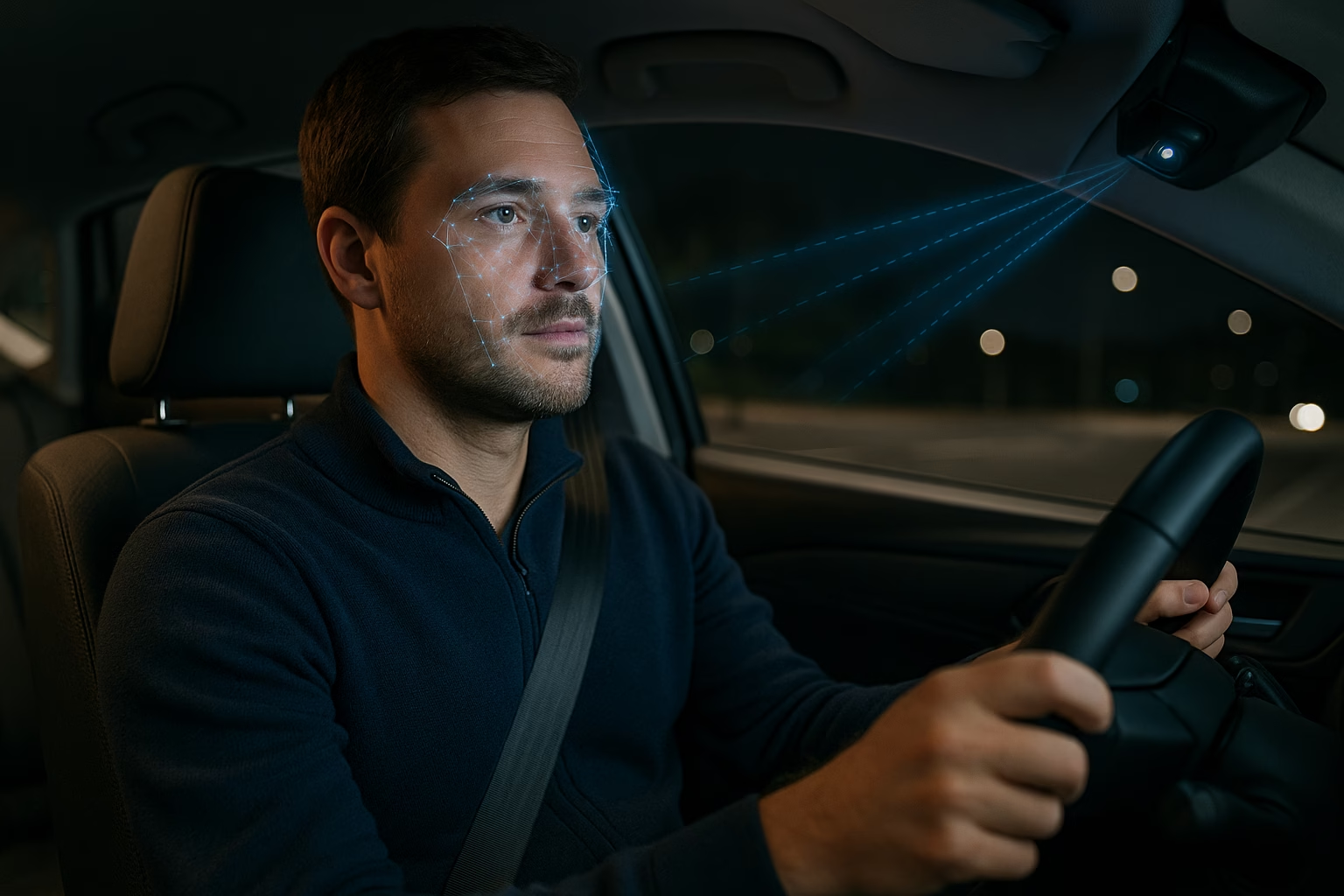Driver Monitoring Systems (DMS) are a vital piece of modern ADAS that uses inward-facing cameras and sensors to check whether you are alert, focused and in control. They watch for signs of drowsiness or distraction, such as eyelid movements, head position, gaze direction, and steering corrections. When the system detects that your attention is drifting or you are about to nod off, it warns you with audible chimes, visual messages or vibrations and can even intervene by slowing the car or tightening your seat belt.
How Driver Monitoring Systems Work
The system uses an infrared camera typically mounted on the steering column or instrument panel to capture facial features and eyelid closure in both daytime and night. Algorithms process the images to gauge your level of alertness. Some systems also monitor steering inputs, lane keeping and driver heart rate or grip sensors on the wheel to better understand your state. If the computer determines you are drowsy or inattentive, it triggers warnings and may prompt you to take a break. DMS is mandatory in the EU on all new cars from mid 2024 and is spreading globally.
Benefits of DMS
Driver monitoring helps reduce accidents caused by drowsy or distracted driving. Early warnings reduce reaction times and encourage you to rest before your performance deteriorates. Systems also support semi autonomous features like hands‑free driving by ensuring the driver is watching the road. With laws increasing around smartphone use, a DMS can help enforce safe behaviour. For fleet and commercial vehicles, DMS improves driver wellbeing and protects company assets.
Limitations and Considerations
Cameras need a clear line of sight to your face. Wearing sunglasses, hats, or poor lighting can reduce accuracy. Some drivers are uncomfortable with interior cameras and privacy concerns; check the manufacturer’s privacy policy. The system monitors your eyes but cannot know everything about your fitness to drive – it is not a substitute for self awareness. DMS may also produce false alarms if you look at side mirrors or glance away to check gauges.
Tips for Using DMS Safely
- Keep the camera lens clean and unobstructed by decorations or phone holders.
- Sit within the recommended range and adjust your seat so the camera can see your eyes.
- If your vehicle allows, personalise sensitivity settings to reduce false warnings.
- Don’t treat warnings as an annoyance; use them as cues to stop for a rest, open a window or hand the wheel to another driver.
- Understand that DMS supports safe driving – it does not drive for you.
Conclusion
Driver monitoring technology is an important safety net in modern cars. By recognising signs of fatigue or distraction in real time, the system can prevent accidents and protect you and other road users. As the technology improves, DMS will become more discreet and accurate, integrating seamlessly with other driver assistance features. Adopt good habits and let the system help you stay alert and safe behind the wheel.

Hiran Alwis is an automotive lecturer and ADAS specialist with over 15 years of experience in diagnostics, advanced safety systems, and technical training. He founded ADAS Project to help everyday drivers and workshop technicians understand and safely use advanced driver assistance systems.
